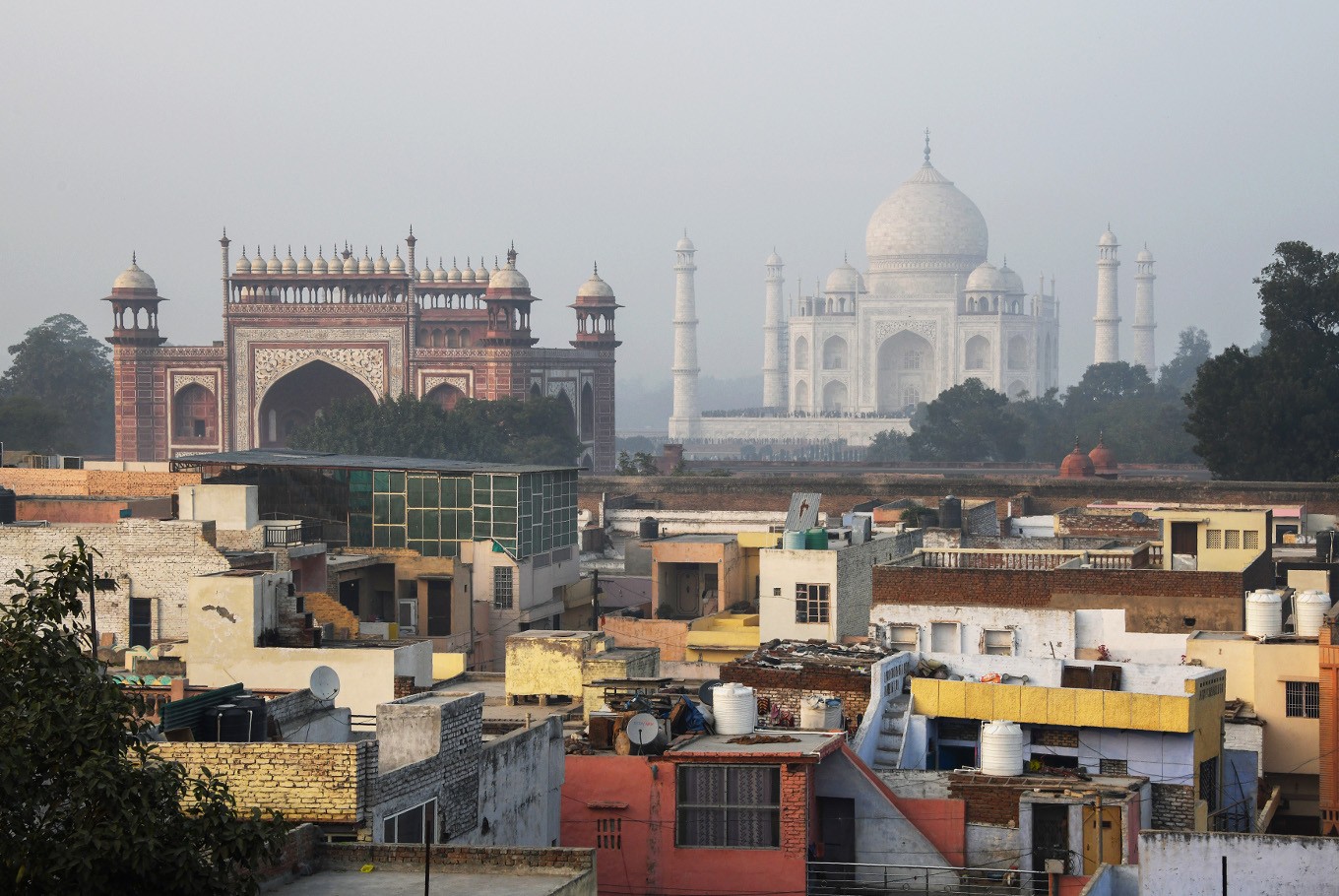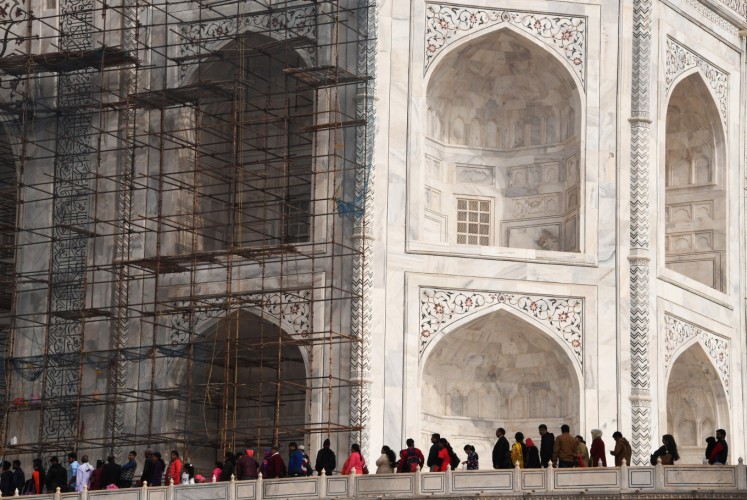Popular Reads
Top Results
Can't find what you're looking for?
View all search resultsPopular Reads
Top Results
Can't find what you're looking for?
View all search resultsNo end to eyesores at Taj Mahal as repair work drags on
Change text size
Gift Premium Articles
to Anyone
 This photograph taken on January 3, 2018 shows residential buildings next to the Taj Mahal in Agra.
India is to restrict the number of daily visitors to the Taj Mahal in an effort to preserve the iconic 17th-century monument to love, its biggest tourist draw. Millions of mostly Indian tourists visit the Taj Mahal every year and their numbers are increasing steadily as domestic travel becomes more accessible. (AFP/Dominique Faget)
This photograph taken on January 3, 2018 shows residential buildings next to the Taj Mahal in Agra.
India is to restrict the number of daily visitors to the Taj Mahal in an effort to preserve the iconic 17th-century monument to love, its biggest tourist draw. Millions of mostly Indian tourists visit the Taj Mahal every year and their numbers are increasing steadily as domestic travel becomes more accessible. (AFP/Dominique Faget)
T
ourist Muskan Mahuwakar pictured the Taj Mahal as a dazzling vision of symmetry and beauty but upon reaching the monument, she -- like thousands of other visitors -- was disappointed to find it covered in scaffolding, its once white marble now yellowing due to pollution.
Building restoration at India's most popular tourist attraction is now into its fourth year, with work yet to even begin on its imposing dome.
"It's disappointing not to get a perfect frame of this immaculate structure," Mahuwakar, a history student, told AFP on her first visit to the Taj, as nearby cleaners armed with colourful plastic buckets and large mops desperately tried to scrub some lustre back into the stained stone.
Other restoration teams scale the facade, blocking views to the ornate Islamic carvings engraved on its walls. The interruption to the serenity of visiting one of the seven modern wonders of the world.
In this photograph taken on January 3, 2018, visitors walk past scaffolding erected for conservation work at the Taj Mahal in the Indian city of Agra. Restoration work at India's most popular tourist attraction has been dragging on for years, blighting views for tourists, but authorities have not even begun work on the unmissable centrepiece of the 17th-century icon -- its imposing dome. (AFP/Dominique Faget)"The repair has been going on for so long. Of course, old monuments need to be conserved, but we must find solutions that are quick and effective," Mahuwakar said, casting a dejected look at the scaffolding around.
Pollution and old age are taking their toll on the 17th century mausoleum, nestled on the south bank of the Yamuna river in Agra, but critics warn that even the options authorities are using to try to fix, may be exacerbating the problem.
Mudpacks have been applied in stages to draw out stains but critics say the process is as damaging as bleaching the fine stone.
Authorities reject this, but admit they are concerned about how to proceed with handling the fragile central dome.
There are fears this inevitable work risks damaging the unmistakable feature of the Taj and will put off tourists.
Read also: India limits visitors to save Taj Mahal
'Taj Mahal is Dying'
Experts warn that iron scaffolding risks leaving irrevocable scars on the fine marble. But bamboo frames are inadequate for such heights, leaving few options for those charged with executing the daunting task.
"We have to clean the dome, but the challenge is how to erect the scaffolding," Bhuvan Vikrama, the government archeologist overseeing restoration efforts, told AFP.
"The structure is almost 400 years old, so we can't put any extra load on it. In righting the wrong, we should not wrong the right."
It remains unclear when work will begin or for how long the central dome will be encased in scaffolding.
Fodor's Travel, a publisher of tourism guidebooks, has advised readers to avoid the Taj until at least 2019 lest visitors be disappointed.
The number of local tourists is also being capped to 40,000 a day in a bid to reduce wear and tear on the monument to love, which was built by Mughal emperor Shah Jahan for his beloved wife Mumtaz Mahal, who died giving birth in 1631.Currently daily visitor numbers average 10,000-15,000 but can be much higher at weekends, going up to around 70,000. According to government figures, nearly 6.5 million people -- mainly from India -- visited the historic complex in 2016.
In this photograph taken on January 3, 2018, Indian labourers work amid scaffolding during conservation work at the Taj Mahal in Agra. Restoration work at India's most popular tourist attraction has been dragging on for years, blighting views for tourists, but authorities have not even begun work on the unmissable centrepiece of the 17th-century icon -- its imposing dome. (AFP/Dominique Faget)Anyone wanting to see the main crypt, which houses marble graves inlaid with semi-precious stones, will also have to pay for a pricier ticket.
But critics warn that restoration is only half the solution, pointing to the industrial factories across the river that near continuously belch out noxious fumes, leaving the air thick with smog.
This toxic haze from this and from dung and garbage burning in and around Agra is responsible for discolouring the Taj, experts say.
Efforts to curb these pollutants, including banning motor vehicles within 500 metres of the building, have failed to clear up the air.
M C Mehta, a lawyer, said his battles in court to shift polluting industries -- including a huge crematorium -- had fallen on deaf ears.
"No one wants to take hard decisions," Mehta told AFP.
"The Taj used to be surrounded by lush greenery, but now there is nothing. Taj is in the last stage of cancer. It is dying, it is gasping for breath."








